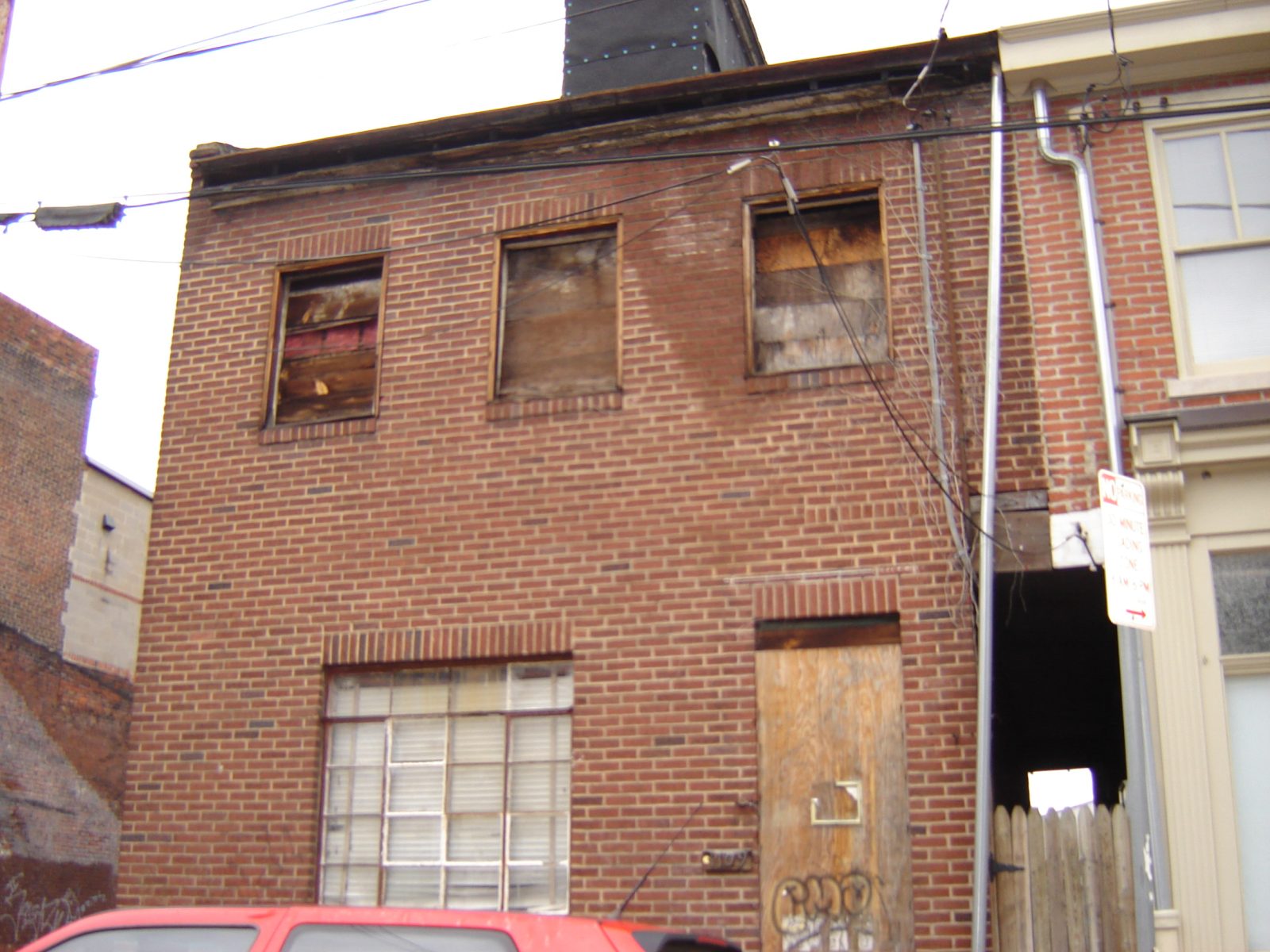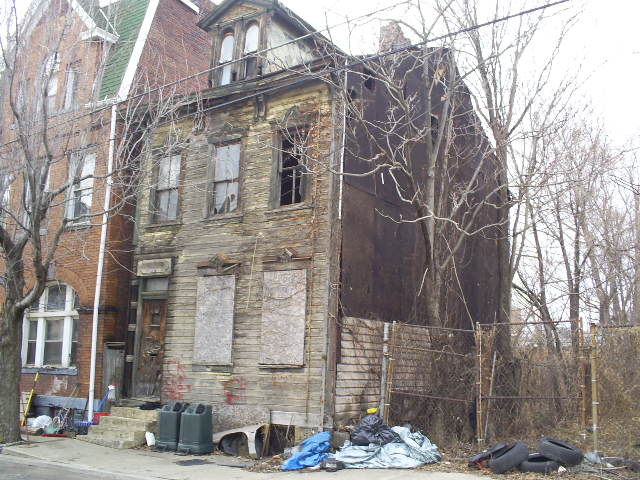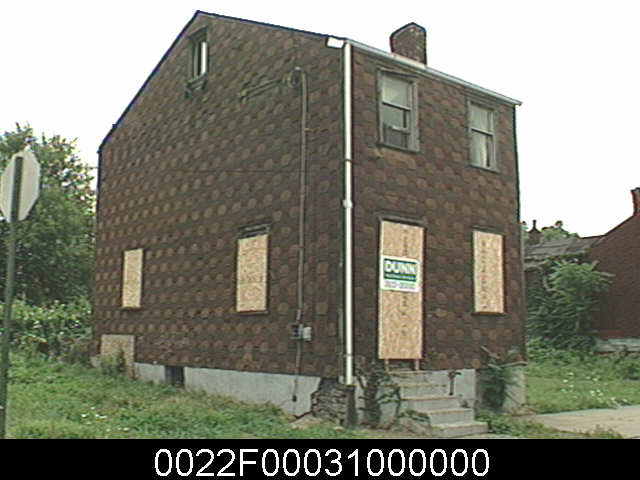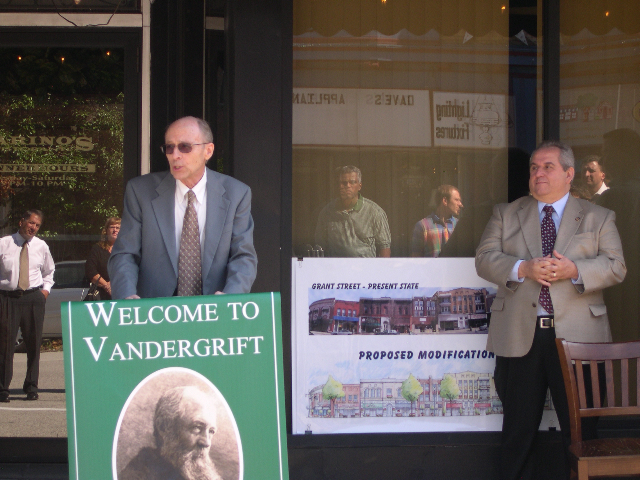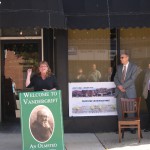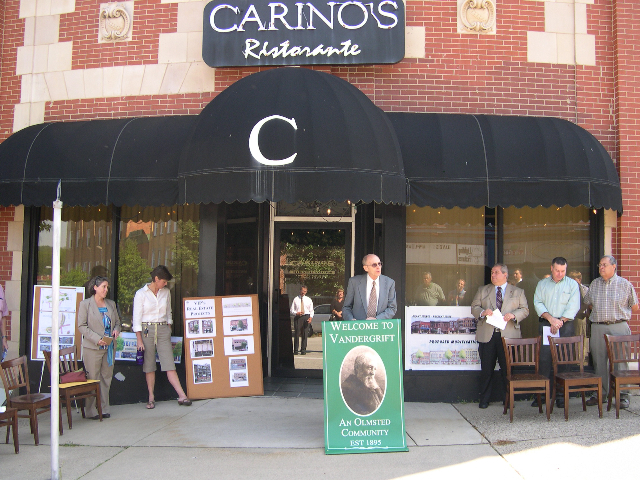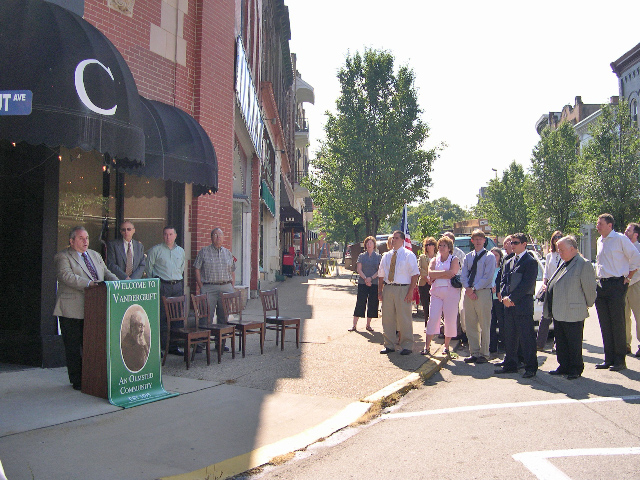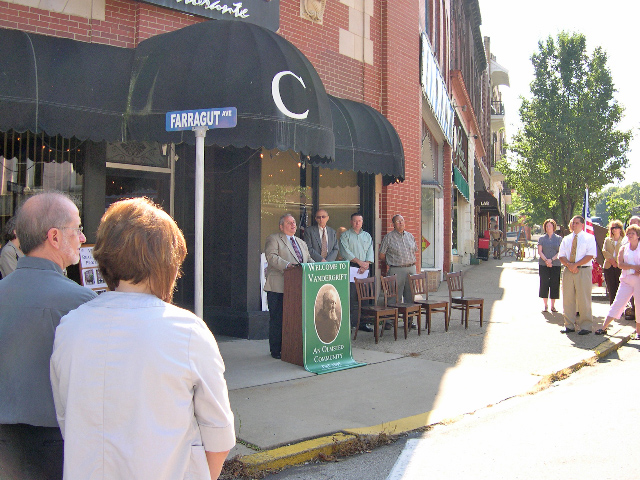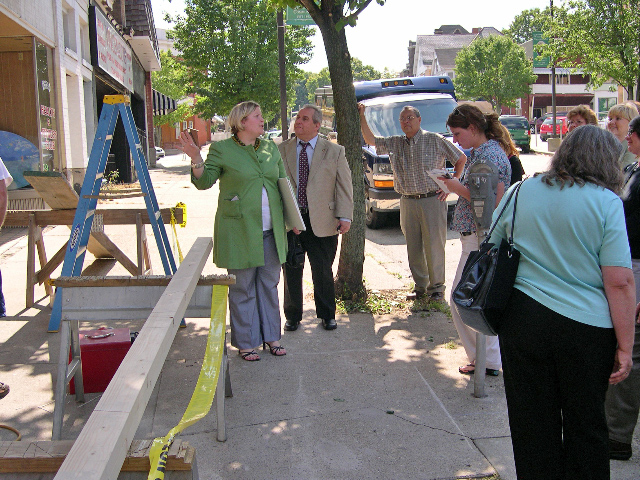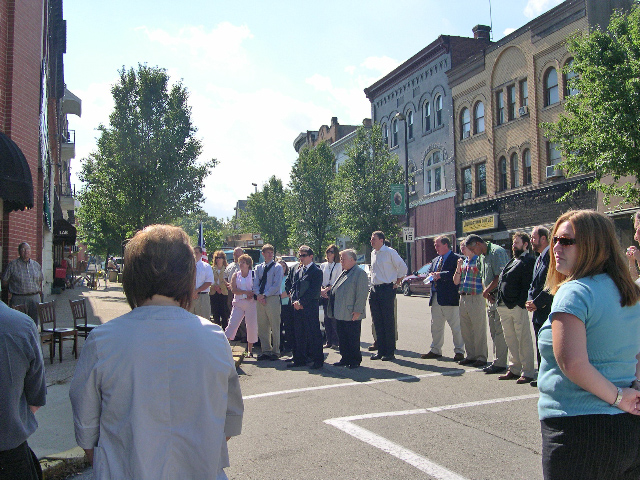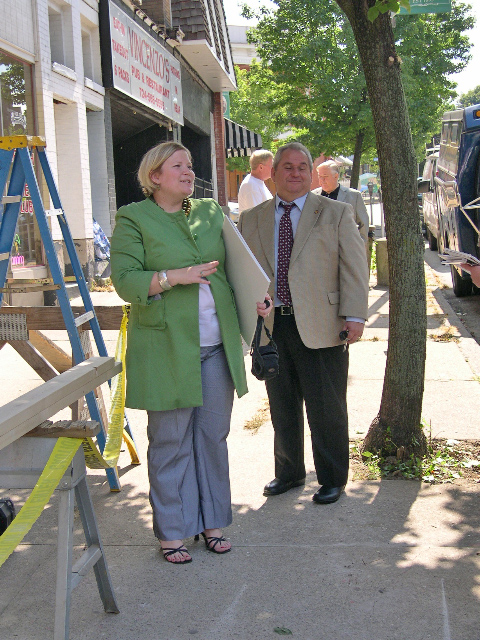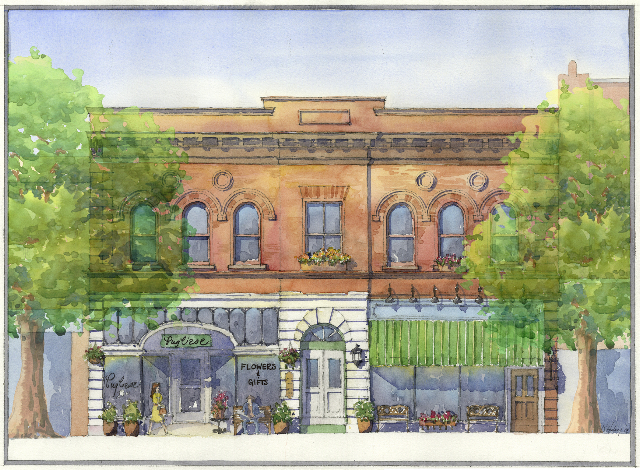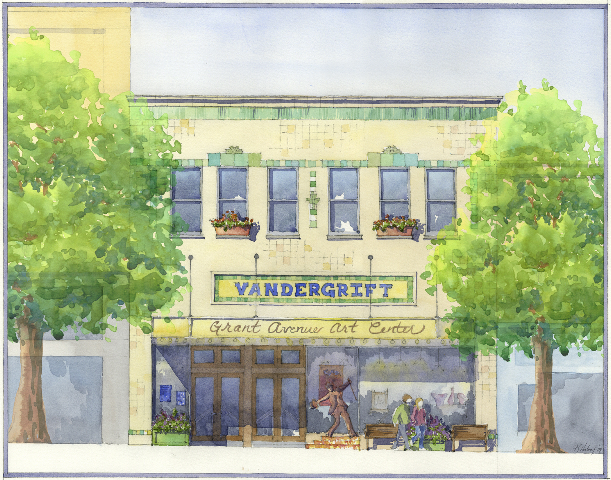
Category Archive: Neighborhood Development
-
Landmarks opposes the demolitions of 1403 and 1414 Nixon Street and 1109 Bingham Street
PREPARED TESTIMONY OF
ANNE E. NELSON, ESQ., GENERAL COUNSEL
PITTSBURGH HISTORY & LANDMARKS FOUNDATIONBEFORE HISTORIC REVIEW COMMISSION,
CITY OF PITTSBURGH PUBLIC HEARING ON CITY DEMOLITIONSJANUARY 7, 2008
Landmarks opposes the demolitions of 1403 and 1414 Nixon Street and 1109 Bingham Street because the City was instructed by the U.S. Department of Housing and Urban Development (HUD) to cease all demolition activities for any buildings located in National Register eligible or listed or local designated historic districts until the City complies with Section 106 of the National Historic Preservation Act and revises its procedures and relevant documentation.
HUD reiterated its instructions and concerns with the City’s Section 106 compliance in a letter dated December 29, 2008. In this letter, the City was further instructed to respond to HUD by January 16, 2009 with: (1) an update on the City’s progress in revising its procedures and relevant documentation to comply with Section 106, (2) assurance that the City has ceased demolition activities, and (3) addressing Landmarks’ concerns.
It is distressing that the City has failed to comply with Section 106 of the National Historic Preservation Act over the past six months. We have yet to receive any responses from the City to our letters commenting on its compliance with Section 106 that were sent in August and September 2008, nor have we received a response to our letter dated July 29, 2008 requesting to be a consulting party.
Landmarks will oppose all City demolitions in historic districts until it complies with Section 106, and we are notified of our consulting party status.
- 1109 Bingham Street
- 1414 Nixon Street
- 1403 Nixon Street
-
Landmarks Community Capital Corporation & Carnegie Mellon University’s Heinz College Hold Landmarks Economic Development Case Challenge
PHLF News
November 14, 2008
by Michael SriprasertIn light of the recent efforts to bring a grocery store to the Hill District, Landmarks Community Capital Corporation, in partnership with the Heinz College, engaged 25 students in the Heinz Colleges’ first ever non-profit case challenge. Titled the “Landmarks Economic Development Case Challenge”, students were introduced to the issue that is gaining more attention both locally and nationally: The dearth of quality grocery stores locating in urban markets.
LCCC presented the topic to students and took them on a site visit to the Hill District to speak with local leadership engaged in the grocery store development. LCCC then took the students to Wilkinsburg to meet with the Mayor and the owner of the Save-A-Lot that just opened two years ago to give students a better understanding of the impact grocery stores can have in urban markets and to give them more insight into the business of operating a grocery store in these types of areas.
After a week of conducting their own due diligence, the students presented on which development they thought would have the greatest likelihood to succeed and would drive positive change for the Hill District and for its residents The panel of judges was made up of professors, economic development professionals, City of Pittsburgh leaders, business professionals from the Hill District and Wilkinsburg, and LCCC staff. The judges all agreed that the presentations were excellent, and making a decision about the top three was very difficult. After over an hour of deliberation, the winning teams were decided upon:
1st Place Winners – Save-A-Lot
Chapel Dcunha, Jebran Syed, Shruti Mohandas, Emily Burnett, Ling Zhai2nd Place Winners – Kuhns
Russell Pustejovsky, Matt Solomon, Jarrod West, Eddie Wilson3rd Place Winners – Save-A-Lot
Conrhonda Baker, Tramaine Brathwaite, Jennifer Clarke, Hanna SmithLCCC & PHLF would like to congratulate all those who participated in the Landmarks Economic Development Case Challenge, and would especially like to thank the Heinz College for engaging LCCC in this great event.
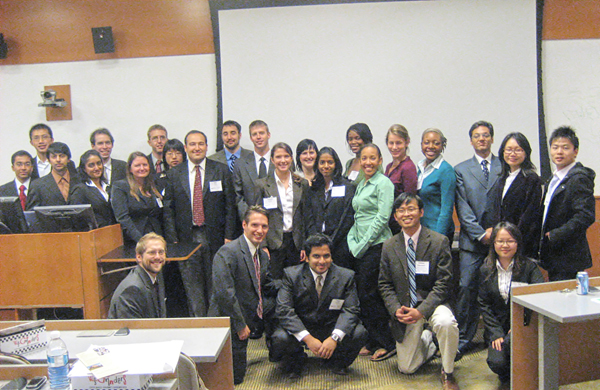
Participants were:
- Conrhonda Baker
- Tramaine Brathwaite
- Emily Burnett
- Jennifer Clarke
- John Cowen
- Chapel Dcunha
- Leigh Halverson
- Kristin Kennedy
- Ashish Mehra
- Sruti Mohandas
- Eric Morris
- Russell Pustejovsky
- Rhajiv Ratnatunga
- Lavanya Shaji
- Hanna Smith
- Matt Solomon
- Michael Spotts
- Jebran Syed
- Huimin Tan
- Zhenyue Wang
- Lu Wang
- Jarrod West
- Eddie Willson
- Jingyi Xu
- Ling Zhai
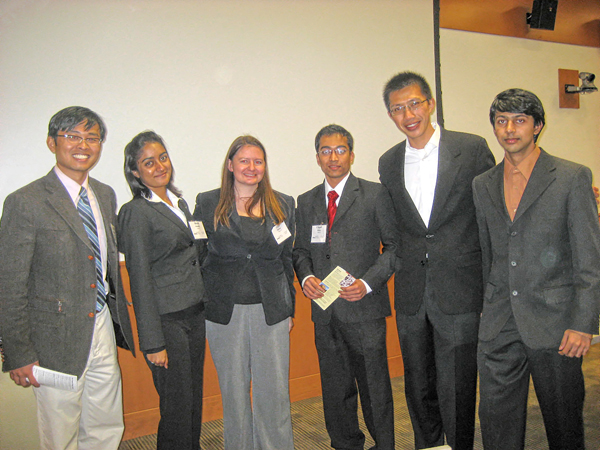
To find out more information about this case challenge, please contact Michael Sriprasert at (412) 471-5808
-
Public Hearing at Historic Review Commission on 200-210 Fifth Avenue, and 438 & 440 Market Street
PREPARED TESTIMONY OFANNE E. NELSON, ESQ.
GENERAL COUNSEL
PITTSBURGH HISTORY & LANDMARKS FOUNDATION
BEFORE HISTORIC REVIEW COMMISSION, CITY OF PITTSBURGH
PUBLIC HEARING ON 200-210 FIFTH AVENUE; 438 & 440 MARKET STREET
NOVEMER 5, 2008
As the future holder of a preservation easement on the Buhl Building and current holder of design control rights on the adjacent properties, Landmarks supports N&P Properties’ plans to rehabilitate the exterior of the Buhl Building, demolish the adjacent structures, and build a new building adjacent to the Buhl. The size, scale, and color of the proposed adjacent building compliment the blue terra cotta Buhl Building. Landmarks’ support of N & P Properties’ plans for the Buhl Building and adjacent structures, however, is contingent on the Pennsylvania Historical and Museum Commission approving Part 2 of their Federal Rehabilitation Tax Credit application.
-
Public Hearing Before Historic Review Commission on 4420 Bayard Street
PREPARED TESTIMONY OF
ANNE E. NELSON, ESQ.
GENERAL COUNSEL
PITTSBURGH HISTORY & LANDMARKS FOUNDATION
BEFORE HISTORIC REVIEW COMMISSION, CITY OF PITTSBURGH
PUBLIC HEARING ON 4420 BAYARD STREET, THE ELMHURST GROUP
OCTOBER 1, 2008
Pittsburgh History & Landmarks Foundation has reviewed the Elmhurst Group’s plans for a new office building in the parking lot behind and owned by the First Baptist Church in Oakland. We appreciate the very good efforts of the Elmhurst Group in regard to the planning and redesign of the structure. In particular, the building’s height, materials, and setback on Bayard Street are in accordance with the other buildings on the street and harmonize the building with the Church. The higher portion of the building along Ruskin Avenue complements the Ruskin Apartment and its materials and to some degree its style.
However, we have the following concerns with the building:
1. The top portion of the seven-story building should be redesigned without the projecting central overhang, which is something of a cliché in modern design. We also suggest that the stringcourse be continued across the Bayard/Bigelow façade just as it does on the Ruskin Avenue façade and with the elongated windows eliminated. We believe that such detailing is inappropriate next to the architecturally-significant First Baptist Church, the Ruskin Apartment Building and the houses of Schenley Farms.
2. We recommend that the walkway around the building be planted with sycamore trees instead of columnar trees as shown. We would be happy to meet with the City Forester to discuss the matter of tree selection. A few columnar trees were planted years ago further west on Bayard Street and they are still nothing more than elongated toothpicks with a few leaves attached. Sycamore trees, used throughout Schenley Farms, arch up over the streets and provide a canopy of elegance, beauty, and shade.
We continue also to have a significant concern with the Historic Review Commission’s jurisdiction and ability to review new construction in historic districts. We hope this matter can be resolved or clarified so as not to cause issues with other new construction projects in historic districts.
-
Vandergrift Main Street Gets Lift
by Shaun Yurcaba
Pittsburgh History & Landmarks Foundation
September 8, 2008Sen. Jim Ferlo announced today a $35,000 grant to assist the Vandergrift Main Street program. This grant will be added to the Restoration Revolving Fund, which was created in 2006 to bring new life to downtown Vandergrift and to restore its distinctive buildings. The Revolving Fund was initially capitalized with a $300,000 grant from the Allegheny Foundation, a charitable entity of Richard M. Scaife.
In addition, the Vandergrift Improvement Program (VIP), Inc., a non-profit organization, announced the acquisition of two new buildings in the heart of downtown Vandergrift, and the restoration of a third building, all utilizing the original Scaife grant to establish the Revolving Fund.
“The VIP is using the Restoration Revolving Fund so effectively that I am very pleased to add additional state resources to it for further leverage,” said Sen. Ferlo.
143 Grant Ave: The VIP purchased 143 Grant Ave. in 2007 and has completed a complete masonry and storefront restoration of the facade. The roof has been replaced. The VIP is in negotiations with a tenant who plans to open a bakery and yoga studio on the first floor and live above in the second floor residential unit.
139/141 Grant Ave: The VIP has just secured 139-141 Grant Avenue. The roof, which had been severely compromised, has already been replaced. The VIP is also upgrading the electrical system and plans to fully restore the facade. Long term plans include renovating the 5 second floor apartments, which are uninhabitable.
134 Grant Ave: The VIP also just secured 134 Grant Avenue (the former JC Penny’s Building). The VIP has cleared the building of debris and is working on a long term plan to locate a Community Art Center and a small business incubator in this space.
According to Meade Jack, President of the VIP, downtown Vandergrift has reached a tipping point. “We have invested a lot of time and hard work in this effort. But it’s been well worth it. The seeds we’ve planted the last several years are now starting to bear fruit. We have a long way to go but we are on the right track,” Jack said. “We are demonstrating that there is still plenty of life in Pennsylvania’s small towns.”
The VIP began in 2003 with a grant from Sen. Ferlo and received DCED Main Street designation in 2006. The main street program is in year three and is being managed in partnership with the Pittsburgh History and Landmarks Foundation (PHLF).
- Arthur P. Ziegler, Jr.
- Shaun Yurcaba and Senator Jim Ferlo
- Vandergrift Flower Shop Rendering
- Vandergrift Art Center Rendering
-
‘Lazarus’ on the Hill?
By Glen Meakem
Pittsburgh Tribune Review
Sunday, August 31, 2008In 1998, Pittsburgh celebrated as the “glitzy” new Lazarus department store opened on Fifth Avenue, Downtown. In the spring of 2004, after just five years, Pittsburghers mourned as the store closed its doors forever — another blow to a city struggling to succeed.
Now Pittsburgh politicians and community leaders face another economic decision — which grocery store to build in the Hill District. I am hoping, for the sake of Hill residents and city taxpayers of all neighborhoods, that our leaders will choose the best long-term economic answer instead of short-term glitz.
The Lazarus project was a costly mistake. In order to attract the store, the Urban Redevelopment Authority lent Lazarus $18 million and the city provided $5 million in additional cash. Despite the large government subsidies, once construction was completed and the doors opened, sales were well below expectations.
Lazarus was obligated to begin repaying the $18 million loan once in-store sales reached $41 million per year. But peak sales never exceeded $22 million. The taxpayer loan never was repaid. Even with more than $20 million of government subsidies, Lazarus sustained big losses and was forced to close.
The truth is Lazarus might have worked if marketproblems — high parking taxes and the lack of downtown residential living — had been addressed first. Instead, politicians chose a reality-ignoring strategy that cost taxpayers tens of millions of dollars and dealt Pittsburgh a tough blow.
The first proposal for the Hill District grocery store is being presented by St. Louis-based grocer Save-A-Lot. Its store is economically viable, based on a business model that works and experience with more than 1,200 stores around the country.
Save-A-Lot deliberately keeps its stores smaller than other grocers, eliminating amenities such as on-site bakeries, pharmacies and dry cleaners. It also limits inventory to approximately 1,200 frequently purchased items — what the corporation refers to as an “edited assortment.”
By keeping its stores small, forgoing amenities that increase the costs of doing business, and stocking only the most popular items in the most commonly purchased sizes, Save-A-Lot claims it saves customers 40 percent on food purchases.
The company is experienced in providing quality service to urban markets like the Hill District. According to Mayor John Thompson of Wilkinsburg, where a Save-A-Lot opened in 2007, the store has surpassed the community’s expectations, providing not only quality food at low prices but also many jobs to community residents and financial support to local charity efforts.
Save-A-Lot says it would not be economically viable to build a full-service grocery store on the Hill. But the small size of the proposed building project (16,500 square feet) would allow additional businesses to move into the Center Avenue location over time (such as a pharmacy), complementing the smaller grocer.
The new Save-A-Lot building is projected to cost $5 million to $6 million and can be up and running in less than a year.
The second proposal, presented by Kuhn’s, is not based on experience or a proven business model.
Similar to the “glitz” of Lazarus, this proposal calls for a $24 million revitalization project that includes a 50,000-square-foot Kuhn’s Market, among other stores. The plan surprised many, since Kuhn’s previously stated — along with Giant Eagle and Aldi — that it was not interested in building a grocery store on the Hill.
Unlike Save-A-Lot, Kuhn’s is a local, family-owned business with eight locations but no experience in urban markets. Yet some community leaders and activists see this more ambitious plan — including a pharmacy, bakery, deli, meat counter and fresh fish section — as a better fit for the neighborhood.
The proposed Kuhn’s project would require an as-yet-unspecified level of taxpayer support above the $2 million in subsidies already promised by the URA and the Pittsburgh Penguins.
Before making their decision, Pittsburgh leaders also should consider one more set of facts: Grocery shopping habits are changing all over the country.
According to a 2007 Gallup Poll, 46 percent of adults say higher food costs are creating financial hardships.
Prices climbed 5 percent in 2007 and 6 percent in 2008 (the largest single-year jump since 1990).
Americans are now buying fewer luxury food items and more store brands.
According to Willard Bishop, a Barrington, Ill., consulting firm, limited-assortment grocery stores such as Save-A-Lot enjoyed an increase in sales of more than 16 percent last year while sales at full-service grocery stores rose only 3 percent.
The Save-A-Lot proposal is in line with current trends while the Kuhn’s proposal runs against them.
The last few days of summer are upon us and community leaders are struggling to make the right decision between two very different grocery store proposals. Will this generation of leaders choose the proven business concept from the company with experience that is likely to serve the Hill community for many years to come?
Or, as their predecessors did with Lazarus, will they choose the expensive, unproven model from a company relying on big government subsidies with no experience in the market it is entering?
In the business world, we call this decision a “no-brainer.” Political and community leaders should choose the commonsense solution over government-subsidized “glitz” and go with Save-A-Lot.
Hill District residents and city taxpayers from all neighborhoods will thank them for it.
Glen Meakem, founder and original CEO of FreeMarkets Inc., a business-to-business Internet company Downtown, is co-founder and managing director of Meakem Becker Venture Capital.
-
Hill District deal angers Save-A-Lot executive
By Kim Leonard
TRIBUNE-REVIEW
Wednesday, August 20, 2008A Save-A-Lot executive is angry over a section of the new community benefits agreement for the Hill District that he views as an attempt to keep his discount grocery chain from building a store in the neighborhood.
The agreement among the One Hill Neighborhood Coalition, the Penguins and government agencies was signed Tuesday. The contract related to the new hockey arena being built at the neighborhood’s edge provides $2 million toward a grocery store and calls for “good faith efforts” to ensure the business is a full-service store with a pharmacy — and is a minimum 25,000 square feet.
Save-A-Lot discount supermarkets don’t contain pharmacies and are smaller. “It appears to us that the language was purposely drafted to specifically eliminate Save-A-Lot,” said Rick Meyer, vice president of market development for the St. Louis-based company, though Hill District officials disagreed.
Meyer emphasized yesterday that his company is ready to build a store, right away, in a neighborhood that has lacked easy access to groceries for more than two decades.
“All I am saying is that there has been noise and talk and theories and grandiose ideas for years, and no one has ever delivered,” Meyer said. “We are ready to deliver.”
Save-A-Lot wants to put a 16,850-square-foot store along Centre Avenue on land controlled by Pittsburgh’s Urban Redevelopment Authority. Prices would run 40 percent less than those in a regular grocery store.
But Kuhn’s, a locally based supermarket chain, more recently proposed a 100,000-square-foot store on the same site that would include a pharmacy, bakery, deli, meat counter and a fresh fish section. The Kuhn’s store would be part of a larger development called Centre City Square.
Neither URA officials nor Kuhn’s representatives could be reached for comment yesterday. The URA is expected to choose one of the proposals in early September. Kuhn’s hasn’t said how quickly its store might open.
Howard Slaughter, CEO of Landmarks Community Capital Corp., has been working with Save-A-Lot and said based on the specifications in the benefits contract, the discount grocer might have to drop its plans.
“If you already know one store is under 25,000 square feet, why put that language in there?” he asked. “The document should have said a ‘quality grocery store’ irrespective of the size.”
One Hill Chairman Carl Redwood said the coalition wrote the grocery store standards into the benefits contract. A larger, full-service market “has clearly been the preference of the community for some time,” he said, adding the document doesn’t exclude Save-A-Lot.
“We would like to have both, actually,” Redwood said of the chains, which could locate in different sections of the Hill District.
Hill House CEO Evan Frazier said early drafts of the benefits agreement contained even stronger, more specific requirements for a neighborhood grocery store. They were written before Save-A-Lot came on the scene, he said.
Frazier said Save-A-Lot still should be eligible to benefit from the $1 million each that the Penguins and the URA plan to put toward a new store. Frazier said he “would hope” the URA doesn’t choose a retailer based on terms in the agreement.
Slaughter also said Kuhn’s plan for a larger store with more departments shouldn’t be the deciding factor. “Whatever supermarket goes there, other retailers will follow,” he said.
Kim Leonard can be reached at kleonard@tribweb.com or 412-380-5606.
-
Councilwoman Tonya Payne & Evan Frazier of Hill House Discuss Grocery Store
Courtesy of KDKA TV

